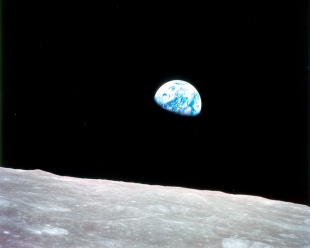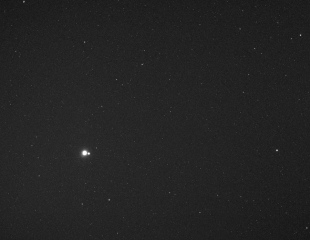There are certain animals that have survived, flourished even, through the use of camouflage (a form of crypsis). They blend into the background so well they become invisible. Predators haven’t cracked the code, camouflage works at the level of the species. Now and then it may fail in individual cases, but on the whole it’s been a successful strategy in the game of natural selection.
In the murky waters of the Network, the visibility is nil. It’s only through the hyperlink that a sense of visibility is created— although visibility is probably the wrong word. Following McLuhan, we should acknowledge the Network as an auditory/tactile space. The nodes of the Network are linked by touch. The hyperlink is activated by touch, it’s a flicking of a switch that opens a door to a hidden hallway. We feel our way through the dark until we emerge into the light on the other side. (This is another reason that the multi-touch interaction mode has spread so quickly).
Imagine a location on the Network that was completely devoid of hyperlinks to foreign sites. You’d have to imagine it, because unless you knew the precise incantation to call it into your browser, it would lay perfectly camouflaged within the darkness of the Network. Sometimes this is called security through obscurity—a kind of blending into the background.
This imaginary location might have an infinite number of internal hyperlinks between the locations within its interior. It could be a whole world, completely unknown to the rest of the Network, a veritable Shangri-La. Because this place is unknown and without hyperlinks, there would be no commerce, no trade of bits between this isolated location and the rest of the Network. Of course, if a single hyperlink was formed, this imaginary location would change forever. To stop outside influences from overwhelming this world, a barrier would have to be built and its integrity enforced.
If we adjust our angle a little bit, we’ve just described the state of the modern Corporate Enterprise with respect to the rest of the Network. The fabric of the external Network has been used as the material for the internal Network—the protocols are identical. Keeping these identical twins apart is called security. Of course, twins have a mode of communication, cryptophasia, not available to others.
Hedge funds are beginning to monitor Twitter to evaluate their portfolio holdings and trading opportunities. The public stream is analyzed in real time for sentiment and triggers to put into their trading algorithms. Enough value has accreted to the stream that there’s an advantage to be gained from taking it into account.
In addition to its presence in the public stream, the Corporate Enterprise has begun to launch private public streams meant to reside securely within the friendly confines of the firewall. The purpose of the private public stream is to create more visibility within the Enterprise—although the metaphors have become crossed again. Traditional corporate reporting provides visibility—a kind of linear numeric business intelligence. A real-time micro-message stream with hyperlinked citations transmits auditory and tactile signals. We hear what people are saying about how things are, and by following the hyperlink we can get a deeper feel.
If the public stream, outside the firewall, has enough juice to merit monitoring, the private public stream has even more. And there’s no skill or guile involved in finding it, it’s a busy public thoroughfare accessible to everyone on the inside. If we adjust our angle a bit more, we can see the private public message stream as a series of diplomatic cables. The diplomatic corps of the United States uses these cables to update the status of the system to the Secretary of State. Private internal message streams can develop a value outside the barriers erected by the native tribe. When the value grows great enough there will be motivation to enable a leak. What at first appears to be a barrier, reveals itself as a membrane. The modern worker is a member of many tribes with many, and sometimes competing, allegiances.
Perhaps we might think it’s just a matter of stronger barriers, a matter of winning the arms race. But as Bruce Sterling notes in his assessment of the Wikileaks Affair, these kinds of cracks are going to get easier, not harder over time. Even the system that we might expect to be the strongest no longer operates on the basis that a war over barriers can be won. Here’s Deborah Plunkett, head of the NSA’s Information Assurance Directorate, on the state of their internal network:
“There’s no such thing as ‘secure’ any more,” she said to the attendees of a cyber security forum sponsored by the Atlantic and Government Executive media organizations, and confirmed that the NSA works under the assumption that various parts of their systems have already been compromised, and is adjusting its actions accordingly.
To preserve the availability and integrity of the systems it has the duty to protect, the NSA has turned to standardization, constant auditing, and the development and use of sensors that will be placed inside the network on specific points in hope of detecting threats as soon as they trigger them, reports Reuters.
In the end, we seem to be transported back to days of the tribe and our allegiance to it. In an age where the barriers around systems have become a Maginot Line, it’s down to what we agree to keep silent about— what we don’t share outside the circle. Our public and private faces will grow farther apart, and the innocent and authentic gestures we contributed to the public stream will now be a matter of show. The backchannel that was brought to the fore will require a backchannel of its own. Somewhere out of the glare, where we can have a private conversation— security through obscurity.
One Comment









